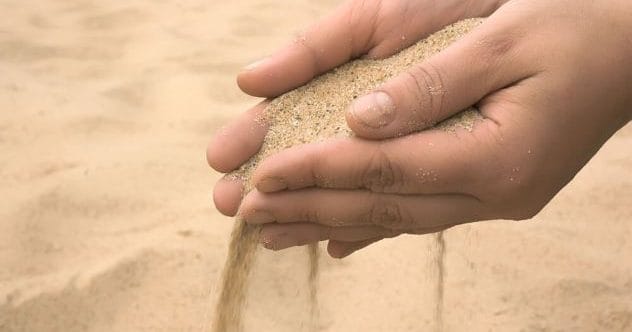For over a hundred years, we’ve been filling our planet with waste that doesn’t disappear and pumping harmful gases into the air. It’s a serious problem, and thankfully, more people are realizing we need to act fast. The good news? Brilliant minds are creating amazing products and machines to help us care for Earth.
Many of these clever ideas aren’t widely known yet, but they have the potential to make a huge difference. Let’s explore 10 of these lesser-known inventions that could lead to a healthier, happier planet if used on a larger scale.
10. Green Cell Foam—Biodegradable Packaging
Piles of Styrofoam in landfills are a big worry for our planet. But KTM Industries offers a hopeful solution with Green Cell Foam. This material, made from cornstarch, is an eco-friendly packaging option for almost anything you need to mail.
Think about this: the U.S. alone buries about 1,369 tons of Styrofoam every day. Styrofoam can take up 25 to 30 percent of landfill space worldwide and needs around 500 years to fully break down. In contrast, Green Cell Foam decomposes in a compost heap in just four months.
Even better, Green Cell Foam doesn’t need special recycling. You can compost it, safely burn it in your barbecue, or simply dissolve it with water. It disappears right before your eyes! It’s a fantastic example of how we can find smarter, cleaner ways to replace everyday items that harm our environment.
9. Transparent Solar Cells
Transparent solar cells could be a game-changer for our energy needs. For years, researchers dreamed of making solar cells that are completely clear. Now, thanks to new findings from Michigan State University, this dream is becoming real.
These scientists use special organic salts that soak up invisible kinds of light, like ultraviolet (UV) light. When the light is absorbed, the panel material moves it to its edges. There, special cells turn this light into electricity.
This technology might even be used in things like tablets and phones. Recent improvements mean these cells could last for 30 years, and making them could cost about the same as current solar panels. Imagine a future where cars run on solar power captured by their windows! Transparent solar cells open up endless possibilities for a world less reliant on fossil fuels.
8. Glass Bottle Recycling Machine
In 2017, DB Breweries, known for making biofuel from beer byproducts, launched another cool idea: the “Beer Bottle Sand” initiative. They created machines that can crush empty beer bottles into fine, usable sand in only five seconds.
Their goal is to lessen our reliance on sand taken from beaches. As the company explained, many of the world’s beaches are shrinking because people use beach sand for building roads and other projects. Whether this was a smart marketing move or a true environmental effort, it’s a great way to deal with used bottles.
These machines can be put in supermarkets and bars, allowing customers to help the environment while enjoying a drink. DB Breweries is serious about being sustainable, also cutting down on plastic and ink use. It’s an impressive step towards greener practices!
7. Ooho Water—Edible Water Pods
Ooho Water pods, created by Notpla, were one of the first exciting alternatives to plastic water bottles. Every minute, people around the world buy a million plastic bottles. To make just one bottle, it takes a lot of oil and water, and releases carbon dioxide.
A huge amount of plastic, between 5 and 13 million tons, ends up in our oceans each year, harming sea life. Experts warn that by 2050, our oceans could have more plastic than fish by weight. So, plastic bottles are a major problem. Ooho offered an ingenious solution with small water pods made from seaweed and plants.
This packaging material is fully biodegradable and even edible! It could break down in 4-6 weeks, like fruit, or you could just eat it. Sadly, these water pods didn’t become popular enough. Notpla now focuses on making other types of eco-friendly packaging from the same cool material. Maybe the world just wasn’t ready for edible water yet?
6. Vertical Farming: The Future of Mass Farming
Farming has been around for thousands of years, but how we do it is changing fast, especially with vertical farming. This method, also called vertical hydroponics, involves growing plants in layers, often indoors. Professor Dickson Despommier at Columbia University helped develop this idea.
Traditional farming depends heavily on weather. With the world’s population set to pass 9 billion by 2050, we need more reliable ways to grow food. Vertical farms can be set up anywhere and scaled up to meet demand, offering a steady supply of crops.
Modern tech like LED grow lights and computer systems that control temperature and nutrients make vertical farming very efficient all year round. Scientists believe that large-scale vertical farming could greatly help fight climate change. Growing food indoors means we could return farmland to nature, which helps forests regrow and uses 10 to 20 times less land.
5. Plastic-Eating Caterpillars
Plastic-eating caterpillars are more of a natural discovery than an invention, but they are definitely worth talking about. We produce over 350 million tons of plastic every year, and since 1950, we’ve made over seven billion tons of it. That’s a lot of plastic to deal with!
Scientists have found a potential answer to this huge plastic waste problem: tiny creatures that can eat plastic. So far, over 50 types of microorganisms have been discovered that can turn plastic into energy.
One special bacteria, Ideonella sakaiensis, was found in Japan in 2016 near a plastic recycling plant. Normally, bacteria eat dead organic stuff, but this one has learned to consume a type of plastic called PET. It produces enzymes that break down the plastic into smaller pieces, which it then uses for energy. Right now, these tiny helpers don’t eat plastic fast enough to solve our pollution problem, but scientists are studying them closely. They hope to one day copy or improve these bacteria to tackle our global plastic issue.
4. Avani Eco Shopping Bags
Avani has developed a shopping bag that is completely biodegradable and much kinder to our planet. Each year, people around the world use about one trillion plastic grocery bags. That’s a staggering amount of plastic. Despite efforts to recycle, it’s estimated that only a small fraction of plastic used since 1950 has actually been recycled.
You might think paper bags are better, but they take four times more energy to make than plastic bags and involve harmful chemicals in their production. This is why fully biodegradable products that can replace plastic are so important. The Avani Bio-Cassava bag is a perfect example of smart design using only earth-friendly materials.
These shopping bags are made from starch from the cassava root. The entire bag can completely break down in 180 days. Avani’s alternative to plastic bags is non-GMO, contains no petroleum, and even the ink used for printing is eco-friendly. It’s a great step towards truly sustainable shopping.
3. HomeBioGas 2.0
The HomeBioGas 2.0 system allows everyday people to actively reduce harmful greenhouse gas emissions. This innovative device had a very successful Kickstarter campaign in 2020, raising much more than its initial goal.
This home biodigester can process up to 6.8 liters (or 1.5 gallons) of organic waste, like food scraps, every day. In return, it creates up to two hours of free cooking gas. It’s a fantastic product that empowers individuals to make a real difference and become more self-reliant with their energy needs.
If used to its full capacity, one HomeBioGas unit can prevent six tons of CO2 from polluting the atmosphere each year. To put that in perspective, the average person worldwide is responsible for about four tons of carbon emissions annually. This invention truly helps households contribute to a healthier planet.
2. Sieve for Drinkable Seawater
Turning seawater into drinkable fresh water has been a long-standing challenge. But a graphene sieve developed by scientists offers a promising solution. A 2017 UNICEF study showed that 884 million people lacked access to safe drinking water, highlighting the urgent need for such innovations.
This breakthrough came from researchers at the University of Manchester, led by Dr. Rahul Nair. He explained that the sieve works because water molecules can pass through it one by one, but salt (sodium chloride) cannot. Salt particles are always surrounded by a shell of water molecules, making them too large to fit through the sieve’s tiny channels. This method is said to remove 97% of the salt.
This incredible sieve could not only help solve the global clean water crisis but also address the growing problem of microplastics in our water. These tiny plastic particles are found almost everywhere, even in humans. A simple, scalable way to purify water could be a game-changer for global health and environmental safety.
1. Liter of Light—Recycled Solar Lights
Liter of Light describes itself as a “global, grassroots movement committed to providing affordable, sustainable solar light to people with limited or no access to electricity.” Their simple yet brilliant idea is transforming lives around the world.
They create low-cost light tubes that use sunlight to provide electricity-free lighting during the day. Their mission is to bring light to the one billion people worldwide who suffer from energy poverty. The technology is ingeniously simple: a two-liter plastic bottle is filled with water and a little bleach (to stop algae from growing). When installed in a roof, it refracts sunlight, illuminating the room below.
This open-source technology is easy to assemble using readily available materials. Recognized by the UN, Liter of Light has already installed over 350,000 bottle lights in more than 15 countries. They partner with communities, sending volunteers to teach people how to light up their homes and streets. This initiative beautifully combines reducing electricity dependence, reusing plastic, and bringing light to those in need.
These ten inventions are just a glimpse into the incredible human ingenuity working to protect our planet. From tackling plastic waste to creating clean energy and providing essential resources, innovators are finding new ways to address some of our biggest environmental challenges. While some of these ideas are still developing, they offer a powerful message of hope. They show that with creativity and determination, we can build a more sustainable and healthier future for everyone.
Which of these planet-saving inventions do you find most inspiring? Share your thoughts and any other cool eco-inventions you know in the comments below!










